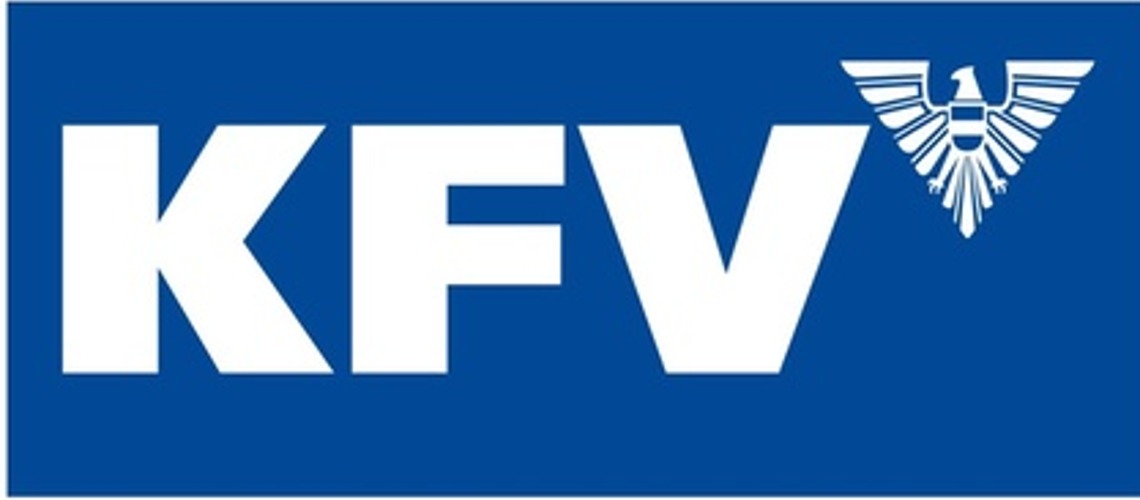Austrian Road Safety Board KFV Tests Toboggan Brake At Stuhleck In The Lower Austria-Styrian Border Area.

To make braking easier, some toboggan manufacturers have developed handbrakes for their toboggans. As with the well-known plastic bobsleigh, the operation of toboggan handbrakes is simple and intuitive. By pulling the brake lever, the brake claws are pressed into the snow and the driving speed is reduced. The KFV (Austrian Road Safety Board) has tested various toboggan hand brakes and has come to impressive results ( study ). Compared to braking with winter shoes, toboggan hand brakes reduce the braking distance by more than half - a clear safety plus.
The KFV wants to further increase safety when tobogganing and is therefore promoting the dissemination and publication of toboggan handbrakes. For the current winter season, the KFV provides selected toboggan run operators with toboggans including hand brakes.
The self-made experience is not an isolated case. Accidents, sometimes with serious injuries, happen again and again when tobogganing. "Even at an impact speed of 10 km/h, a collision with a tree can be fatal for children who are not wearing a helmet," explains Dr. Johanna Trauner-Karner, Head of the Sports and Leisure Safety Department at the Road Safety Board (KFV). And the self-test shows: 10 km/h can be reached fairly quickly, even on relatively flat toboggan runs.
The good news: This can be remedied relatively easily with a toboggan brake. There are now various providers and systems that are essentially very similar to one another. By pulling up a lever – either on the side of the toboggan or in the middle, right in front of the seat – you press either two claws or simply two metal bars about a thumb-thick diameter into the snow, which provide deceleration.
In the area of the family lifts at Stuhleck, the KFV researchers and test pilots Michael Nader and Alexander Pommer have set up a test site. After a short acceleration on a straight stretch, a pink line in the snow marks the beginning of braking, meter markings are sprayed on the side. Directly at the braking start, the speed is measured with a laser in order to be able to really compare the results. Braking is done once with winter shoes, once with spikes that can be attached to the shoes, once by edging the toboggan and of course with the toboggan handbrake.
The ranking is not surprising, as it was to be expected that braking with winter shoes alone was the worst, followed by spikes, edging and handbrakes. The differences are impressive. In the case of emergency braking from 25 km/h, the toboggan only stops after 14.7 meters with conventional foot braking. If you brake with a handbrake, the distance is reduced by more than half to seven meters! Or to explain it even more vividly: If you came to a standstill with the handbrake just before the obstacle, you would hit the brakes with winter shoes at a speed of 18 km/h. “So the handbrake is a very clear safety plus,” says Michael Nader, brushing the snow off his jacket. "Especially for beginners who have little experience in mastering the toboggan,
And tobogganing accidents are not uncommon. According to KFV statistics, around 2,200 people between Arlberg and Hoher Wandwiese are injured so badly every year when tobogganing and tobogganing that they have to be treated in the hospital. According to the Board of Trustees for Alpine Safety, two accidents a year even end fatally. "Speed is often underestimated," says Johanna Trauner. GPS measurements by the KFV show top speeds of more than 60 km/h.
It's not quite that fast on the Stuhleckbahn, as the curve and trees come closer uncomfortably fast. With a bold step on the brakes, the precarious situation quickly disappears into thin air. The deceleration on the grippy track is actually impressive, the handling is child's play. "A great system," agrees Hans Hirschegger, Spital am Semmering's tourism officer. “Tobogganing is becoming more and more popular. Many guests no longer only ski, but also like to go tobogganing in the afternoon.” 40 sleds are available for hire at the middle station of the Stuhleck cable car in Spital am Semmering. 10 of them now with the new handbrake.
In addition to Stuhleck, KFV has provided three other ski areas with toboggan brakes: the Mariazeller Bürgeralpe, the toboggan run in Bramberg am Großvenediger, where the longest illuminated toboggan run in the world is located at 14 kilometers, as well as the Brandnertal ski area in Vorarlberg. "It's great that you can retrofit the brakes, so you don't have to replace the entire fleet," says Hirschegger.
At the end of the test day, the well-known saying of racing and speed lovers has to be rewritten, because: He who brakes wins.













